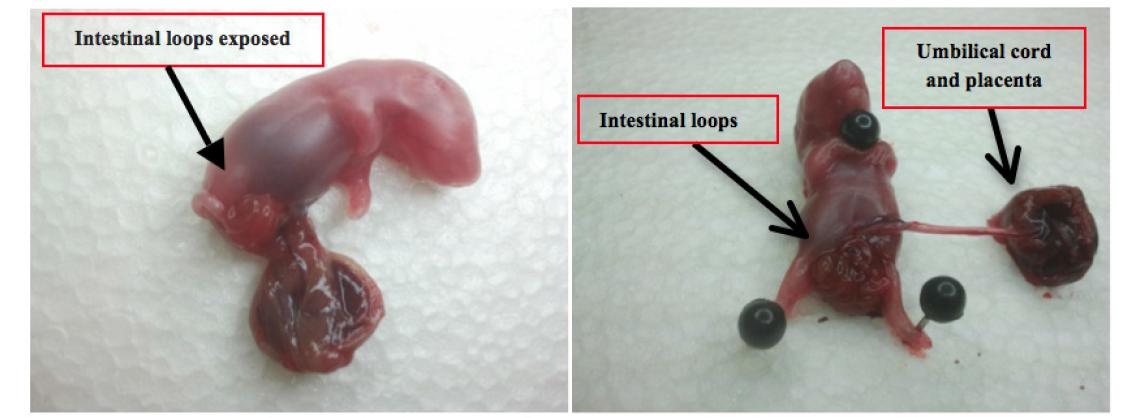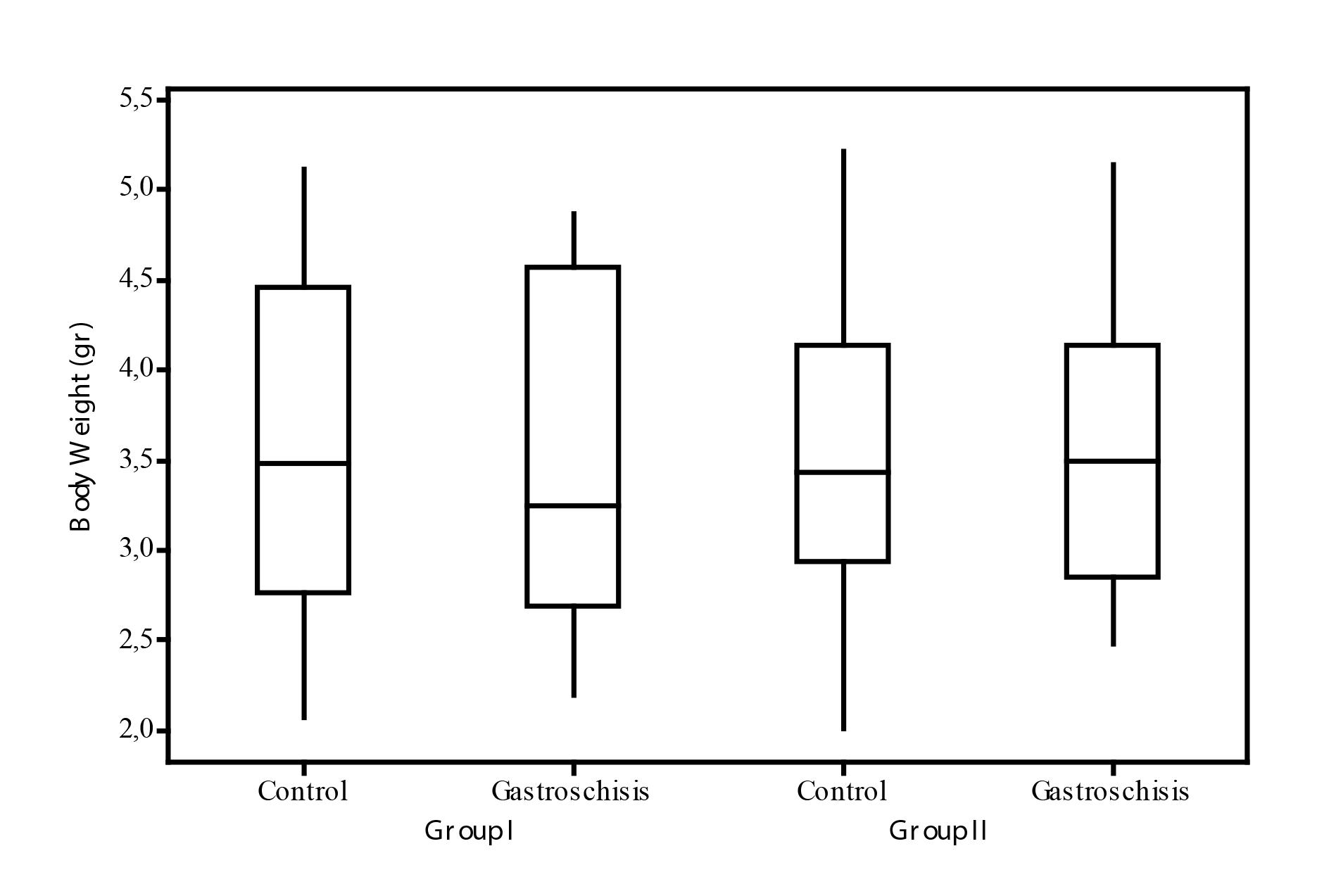PURPOSE:
To validate the gastroschisis experimental model in female rats and the effects on the glutamine fetal morphology during pregnancy.
METHODS:
Twelve pregnant rats Wistar were separated in two groups: Group I (n = 6 rats, 71 fetuses) took glutamine and Group II (n = 6 rats, 75 fetuses) took isocaloric supplementation. At the 18th day of pregnancy, female rats were taken to hysterotomy and the fetuses which were selected for the act of gastroschisis were partially removed from the womb and by the laparotomy technique, the exclusion of the intestine was done. After that, fetuses were put in the womb cavity again and the rats' abdomen sutured. At the 21st day of pregnancy, date before delivery, by C-section ordinary animals and the ones with gastroschisis were removed and studied separately. The morphometrical parameters studied were the body weight (PC); the intestine weight (PI); the intestine length (CI) and its relations (PI/PC, PI/CI e PC-PI).
RESULTS:
The intestine weight (PI) and the intestine length (CI) were different in fetuses with gastroschisis (p<0.05), however no difference between the groups regarding supplementation with glutamine.
CONCLUSIONS:
The gastroschisis experimental model is valid and reproducible. The nutritional therapy with glutamine did not change the morphometrical parameters.
Gastroschisis; Glutamine; Fetal Development; Rats










